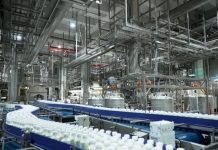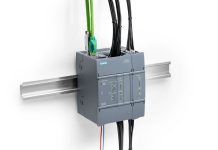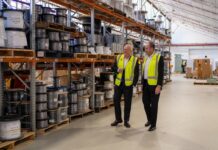Product Release
Three years ago, Automation Innovation and P-Laser designed a glass mould cleaning robot, which cleaned moulds using laser ablation instead of traditional cleaning methods.
The revolutionary system has been running 24/7, showing excellent results in the fields of surface cleaning, cost reduction, sustainability and quality of the end product. Now the new AiMC robotic cell takes the principle of that first system to an entirely new level. The fully automated glass mould cleaning system uses integrated Siemens 3D scanning technology for measure-made cleaning profiles of any glass mould.
Return on Investment: ROI of 12 to 18 months
Current methods of contaminant removal include bead blasting, ultrasonic (often using chemicals) or dry ice blasting, followed by a manual process to hand polish and re-machine the moulds to remove surface imperfections. Estimates show that large manufacturers scrap up to $1 mil AUD worth of moulds per year as a result of these cleaning methods.
Manufacturers are looking for cost-saving measures, which the AiMC-1000 delivers. Not only in the reduction of cleaning and mould replacement costs but over large production volumes, the savings on glass used can be significant. It also allows manufacturers to move to a fully automated plant. The estimated return on investment for this system is between 12 to 18 months for an average sized plant.
Laser cleaning as a greener alternative
Glass moulds have particular needs when it comes to cleaning. Some of the most significant difficulties when it comes to glass mould cleaning are:
- The base material should not be degraded. Degradation leads to an increase in the volume of the mould and the amount of glass needed to fill it.
- Closing edges must be preserved to ensure no burrs are introduced and logos remain crisp.
- Glass moulds have small holes to release air. Laser cleaning enables cleaning of these holes without leaving behind any residues.
Industrial laser cleaning – or ablation – is the process of clearing away undesired material from a solid surface by irradiating it with a laser beam. By absorbing the energy of the laser beam, the targeted material is heated very quickly, making it evaporate or sublimate. As the surface below does not absorb any energy, there is only a minimal impact on the base material. Laser cleaning is a green alternative for traditional cleaning methods, as it doesn’t use chemicals and the mould’s life span is substantially increased.
3-D mould scanner
The AiMC-1000 uses state of the art 3-D scanning technology with patented software algorithms that have been jointly developed with Siemens. Mould specifications and design subtleties can be set by CAD and live-scan data and cleaning parameters can be customised. By manipulating the laser characteristics, the amount of material removed can be controlled with extreme precision. Contaminants are vaporised from cavities and channels, leaving no residue. It can also penetrate into the smallest surface details and pin-sized vent holes.
Safety, reliability and consistency are of paramount importance, making visual, proximity and analog sensors, high-speed dependable communications and state of the art controls are the fundamental building blocks of the system. The optional artificial intelligence capabilities of this system are of significant benefit. For all AiMC machines around the world, data is scanned for each mould cleaning process. Data is then delivered to the cloud, where it goes through an AI processor. The algorithm becomes smarter and more refined each time. That data then goes out of the cloud to other machines across the network, ensuring the very highest of standards. The process is entirely autonomous and future proof, allowing for Industry 4.0 integration and reporting.
Key benefits
- No polishing
- No waste
- Minimal Labours costs
- 24/7 run time
- No chemicals/consumables
- Extended life span of mould
- Reduce manual handling
- Eliminate the need for bead/sand-blasting material
- Quality improvements
- Consistency and repeatability
- Logos remain crisp and clear
- Mould growth eliminated
- Rapid installation
- Low power requirements
- System linked with mould management platforms
- Industry 4.0 integration
- Remote monitoring
- Low maintenance
- Ease of use



















